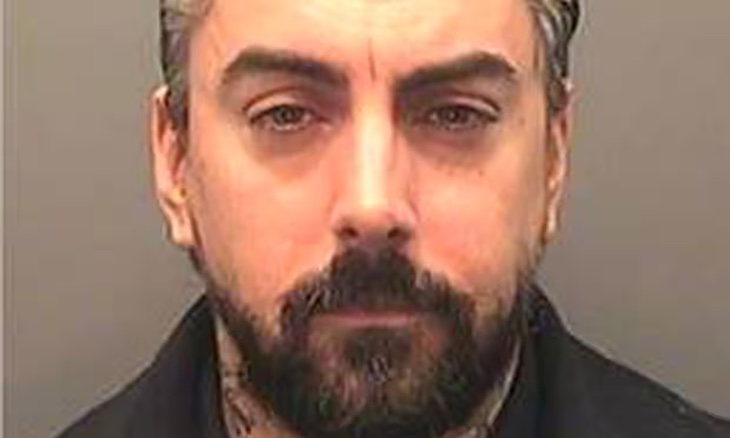This weekend, armed assailants tortured a prisoner and held him hostage in HMP Wakefield for six hours, before specialist prison staff stormed the cell. The prisoner was taken to hospital with stab wounds. Much has been made of the fact that he is Ian Watkins, the front man of the group Lostprophets, who was imprisoned for 29 years in 2008 for the sexual abuse of children. As you can imagine, there isn’t a lot of sympathy for one of the most grotesque and sadistic paedophiles in our prison system. But this misses an important and troubling point.
Wakefield prison is one of a small number of high security prisons. It was recently classified as ‘outstanding’ in HM Prison and Probation Service annual performance ratings. It was also well regarded by the independent prisons inspectorate. So if a hostage incident can take place here with such a high profile prisoner, it’s fair to say that it could take place anywhere. And with other targets.
From the little we are allowed to know about the incident, it appears that the Watkins attack was carefully planned. It was launched at the weekend when prisons have fewer staff on duty and they are typically more relaxed.
When someone is targeted this way and isolated in a cell, there are usually contingency plans in place designed to clear the area and begin negotiations. It’s clear from reports that when these negotiations failed, and it was judged Watkin’s life was seriously at risk, the prisons team used stun grenades to end the siege.
While we don’t yet know the identity of the assailants, Wakefield holds some of the most dangerous people in the country. Around 60 per cent of its inmates are high harm sex offenders and 150 of its 700 odd offenders have ‘Category A’ status – reserved for offenders who would pose a serious threat to the public or national security if released. Wakefield has earned the grim sobriquet ‘Monster Mansion’ with some justification.
I’ve been interested in prison hostage taking since training prison negotiators in the mid-90s. The standard doctrine makes sense for the vast numbers of incidents – most of which are driven by boredom, revenge or delusion. The negotiation aim is to isolate and contain the incident and talk the perpetrators into a peaceful surrender. But our high security prisons now hold a very large number of ideologically motivated offenders and the point of hostage taking for them is to kill the victim for political or religious reasons, not negotiate a pizza or a helicopter to Vegas.
Which brings me to two of our other high security prisons – which even by the prison service’s own unreliable estimates, are certainly not ‘outstanding.’ HMP Whitemoor and HMP Long Lartin, in the vale of Evesham and the Cambridgeshire fens respectively, have both been heavily criticised by the inspectorate. In both jails, morale was low and there were insufficient staff even to keep the wings clean. The Chief Inspector Charlie Taylor wrote that a ‘filthy’ and uncared for environment was a clear proxy for other bigger problems.
So what has a lack of cleanliness got to do with hostage incidents? Plenty. Both of these jails are now assessed by the prison service as ‘of serious concern’ which really does mean the wheels have fallen off. These are places locking up huge numbers of Islamist terrorists who have had their ‘divine mission’ interrupted by the police and the security services. They have all day and every day to observe routines, profile staff and exploit weaknesses. From their point of view, hostage taking is a rational, even religiously mandated duty to complete their jihad. Reporting to the government, I was seriously concerned at the lack of capacity to deal with this threat in 2016. Inevitably, in HMP Whitemoor in 2020 two religiously inspired Islamists took an officer hostage armed with weapons and dressed in fake suicide belts. They were later convicted of attempted murder in connection with terrorism. I am still unconvinced that my recommendations on this specific issue have been adopted.
If two of our highest security prisons holding some of the greatest national security risks in western Europe can’t even get the bins emptied, they are unlikely to be on top of much more serious security issues.
Hostage taking inside maximum security institutions ought to be ‘never events.’ I wrote recently about an incident at HMP Dartmoor. A prisoner took an officer hostage with a bladed weapon for hours in the segregation unit – supposedly one of the most secure parts of any prison. It would, God forbid, take just one murdered officer to cause irreparable damage to the rule of law inside our teeming and violent institutions. Would you go to work the next morning in a place where your colleague had been beheaded? This is not hyperbole.
Yesterday, we were treated to an accidental truth bomb, when the Ministry of Justice revealed in an online document, hastily deleted, what all of us who write about prisons know – that levels of staffing are ‘dangerously low.’ While it is a refreshing departure from the inane drivel that characterises most MoJ missives, it should be keeping justice secretary Alex Chalk awake at night.
Fewer and fewer staff are prepared to be brutalised by prisoners – with lower staff numbers then creating a death spiral that will mean more not less hostage attempts. And to borrow from the IRA: prison officers have to be lucky all the time, the perpetrators only once.







Comments